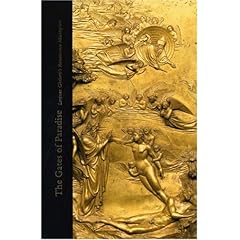 From all over the world, looted Art returned to Italy to star in a long anticipated stylish display and prominent exhibit. Provenance is everything in the museum-quality Art world and the underpinnings of how Italy used legal means to wage a decade long custody battle to gets its art treasures returned. Many a curator and gallery owner suffered damage to their reputations and snickers towards their institutions when caught with artwork with dodgy provenances. Ouch - wonder if the settlement says they have to pay full price to see what they once had in their own shops and museums. They were tracked down by a select Italian team of carabinieri, or military police, specializing in art and archaeological theft.
From all over the world, looted Art returned to Italy to star in a long anticipated stylish display and prominent exhibit. Provenance is everything in the museum-quality Art world and the underpinnings of how Italy used legal means to wage a decade long custody battle to gets its art treasures returned. Many a curator and gallery owner suffered damage to their reputations and snickers towards their institutions when caught with artwork with dodgy provenances. Ouch - wonder if the settlement says they have to pay full price to see what they once had in their own shops and museums. They were tracked down by a select Italian team of carabinieri, or military police, specializing in art and archaeological theft. Rome's Quirinale Palace will kick off the openings with a 70 piece in your face splashy exposition with the subtle title of "Nostoi: Returned Masterpieces" or "Capolavori Ritrovati" meaning Recovered Masterpieces. Italy's Minister of Culture, Francesco Rutelli, was a proud Master of Ceremonies standing amidst returned august marble statues and hand painted crockery as he detailed the Art's lawful return to the press. Many of the most celebrated and valuable pieces were from American culture palaces such as the Boston Museum of Fine Arts, J. Paul Getty Museum, Gotham's Metropolitan Museum of Art among others. California's Getty lost the most in its settlement with Italy. Some of the museum curators were not fussy enough in checking the particulars during acquisitions resulting in the legal art wars fought on several continents. Hark, the irony abounds. Of course, Italy was gracious in victory - not.
Rome's Quirinale Palace will kick off the openings with a 70 piece in your face splashy exposition with the subtle title of "Nostoi: Returned Masterpieces" or "Capolavori Ritrovati" meaning Recovered Masterpieces. Italy's Minister of Culture, Francesco Rutelli, was a proud Master of Ceremonies standing amidst returned august marble statues and hand painted crockery as he detailed the Art's lawful return to the press. Many of the most celebrated and valuable pieces were from American culture palaces such as the Boston Museum of Fine Arts, J. Paul Getty Museum, Gotham's Metropolitan Museum of Art among others. California's Getty lost the most in its settlement with Italy. Some of the museum curators were not fussy enough in checking the particulars during acquisitions resulting in the legal art wars fought on several continents. Hark, the irony abounds. Of course, Italy was gracious in victory - not.The exhibit of the $700 million USD of returned art is expected to last through 2 May, 2008. This does not finish the custody battles though. There are other knock down drag out battles over other works such as the Statue of a Victorious Youth still residing at the Getty. The other famous piece with its own room at the Getty, Aphrodite, is scheduled to return in 2010."The odyssey of these objects, which started with their brutal removal from the bowels of the earth, didn't end on the shelf of some American museum," said Francesco Rutelli, Italy's vice prime minister and cultural minister, at the exhibit's opening. "With nostalgia, they have returned. These beautiful pieces have reconquered their souls."
Rutelli guided nearly 200 journalists through the exhibition's dramaticvenue, which dominates Rome's highest hill and is considered the heart of the Italian state.
Lining the palazzo's formal gallery were carefully lighted display cases containing objects that were once signature pieces of their American owners. The works include a towering marble statue of Vibia Sabina, a Roman empress, from the Boston museum and, from the Getty, the arresting sculpture of mythical griffons attacking a fallen doe. The Met's famous vase, the Euphronios krater, will join the exhibition in January. (Getty pictures/Viba)

Learning about Italy's art treasures would take a lifetime. Seeing them in person is awe inspiring as they are much more majestic. Books however do an amazing job of making one feel right there. In that spirit, this 2007 book by Gary M. Radke, The Gates of Paradise: Lorenzo Ghiberti's Renaissance Masterpiece, offers the work of a later art period inspired by ancient artworks now returning one by one to Italy.










No comments:
Post a Comment